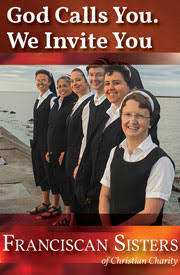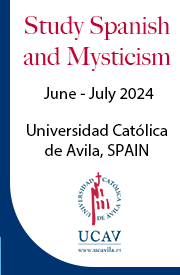If you were Dan Brown, Ron Howard, or Tom Hanks you wouldn’t care what people –Catholics or anyone else – say about the quality or believability of your work. Those wealthy gentlemen are, of course, the author, director, and star respectively of Angels & Demons, the likely blockbuster sequel to The Da Vinci Code. I will not be seeing the movie, which premieres today, although it can only be better than the book. Angels & Demons may not be the worst novel I’ve ever read, but only because I once slogged through Bulwer-Lytton’s The Last Days of Pompeii.
That I write “about” A&D, the movie, without having seen it may give Messrs. Brown, Howard, and Hanks reason to sigh knowingly: You see, they criticize us even though they haven’t seen our work. Perhaps. But how much suffering must one booklover and movie buff be forced to endure? However much Ron Howard may have improved by attrition many of Dan Brown’s loonier plot twists, what was true of their earlier smash hit is true of A&D as well. As Fr. Richard John Neuhaus wrote in 2006: “There is no gainsaying that The Da Vinci Code should be debunked and the seriously confused set straight.”
Angels & Demons is what they call a page-turner. But because I’d found I lacked the stamina actually to turn beyond page five of The Da Vinci Code, I opted to listen to the audio version of A&D – fifteen CDs and nineteen hours of pure torture. Brown’s swinish, turgid prose makes waterboarding seem like smorgasbording.
Did I just write “turgid”? In Chapter 43, Mr. Brown describes our hero, Harvard “symbologist” Robert Langdon, as “feeling turgid,” although in the context Langdon seems neither swollen nor pompous, which is not to say he isn’t the latter. In an earlier chapter – the book has lots of those (I swooned to hear the reader announce, “Chapter 94,” when I was only on disc 10!) – Professor Langdon, world-renowned scholar, tells his undergrads that Christianity is fundamentally a cult derived from Atenism:
“Christianity,” he says, “is filled with examples of sun worship.”
Now I’ve wandered down this poorly lighted path before (see “Facing East”), and I’m not looking to solicit more comments about Catholics and the rising sun. Besides, it’s what Langdon says next that’s ostentatiously farcical. A student objects to the notion that Christianity is some re-purposed sun cult, and Langdon quips that the faith is a mishmash of all sorts of things. For instance:
“The practice of ‘god-eating’ – some of you know it better as Holy Communion – was borrowed from the Aztecs.”
Say . . . what? Your village idiot knows Communion was instituted at the Crucifixion-eve Seder, which is to say a few decades shy of 1500 years before the conquistador followers of Jesus encountered residents of Mesoamerica.
Were Dan Brown being paid $1000 for every teeth-grinding banality, instance of unintended hilarity, and egregious error in A&D, he’d be a billionaire. Instead he’ll have to await publication of his third Langdon thriller, The Lost Symbol, coming in September (and already in the Top 10 at Amazon.com).
Here’s the A&D plot (no “spoiler alert,” since you can’t spoil what’s already putrid): the “ancient” Illuminati plan to evaporate the Vatican with a stolen antimatter device, but Langdon and a pretty woman stop them, only to discover the villain’s not really the Illuminati (who never amounted to much and are long gone) but a priest – bastard son of the pope the priest has recently murdered.
Of Langdon’s attraction to that pretty woman, Brown writes, “He felt drawn,” which led me, under my earphones, to say aloud:
“He’s ‘drawn’ alright — just like Disney’s first cartoon sketches of Mickey Mouse.”
And in the very next chapter it’s revealed that Langdon wears a Mickey Mouse watch! Coincidence? I. Don’t. Think. So. There are no coincidences in the Browniverse, only . . . conspiracies
Speaking of which, just last week Mr. Howard – as one British website put it – accused Benedict XVI of “scuppering” his movie: “Shockingly, said Howard, the Church pulled strings to ensure that the filmmakers could not film in two buildings in Rome . . . large buildings, with crosses on the top. You know, churches.” I believe Mr. Howard was unintentionally complaining that the Vatican has been restrained and jovial about the film’s release and has not helped promote the film by condemning it.
That was left to William Donohue’s Catholic League and a pamphlet, ANGELS & DEMONS: More Demonic Than Angelic, written “to debunk the mythology, lies and smears” of the book and, as Mr. Donohue writes, “the movie upon which [sic] it is based.” It must have been heaven-sent for the filmmakers – an attack on the movie none of it having to do with their film and some of it unrelated even to Dan Brown’s book. It packs a lot of humorless and, well, turgid prose into just thirteen pages.
The Church is right to dismiss this one with a chuckle.
Brad Miner, a former literary editor of National Review, is senior editor of The Catholic Thing.
(c) 2009 The Catholic Thing. All rights reserved. For reprint rights, write to: info at thecatholicthing dot org
The Catholic Thing is a forum for intelligent Catholic commentary. Opinions expressed by writers are solely their own.















